Meet the students who have contributed to our work!
2025
Maven Mercado (they | him)NOAA Hollings Scholar Drexel University Maven is an undergraduate at Drexel University in Philadelphia, PA, majoring in environmental science and minoring in geosciences. They interned with the Program during the summer of 2025, where they used mapping and coding software to identify and characterize unique benthic habitat classes to inform offshore activities and management decisions off the West Coast. This project is part of a larger national deep-sea habitat guide that is intended to streamline impact assessments based on the distribution of deep-sea corals and sponges, which act as vital habitat for many commercially important species. Alongside this, Maven revised four GIS StoryMaps to enhance clarity and increase accessibility to this educational content. Additionally, they updated GIS web applications and Essential Fish Habitat datasets. After completing their undergraduate degree, they plan on pursuing a graduate degree in marine science to pursue further work that combines marine resource management, data science, and deep-sea ecology.
|
2024
Kiki Kamakura (she | her)E(SP)^2 Scholar, NOAA Fisheries Intern Barnard College of Columbia University
During the summer of 2024, Kiki Kamakura interned remotely from the Pacific Islands Fisheries Science Center to support a joint project between NOAA and BOEM. The primary objective of this project was to develop the National Guide to Deepwater Sensitive Habitats and Associated Fauna, which will provide environmental managers with a single resource to improve identifications of deep-sea fauna and habitats in U.S. waters. The guide will also help managers evaluate the sensitivities of these fauna and habitats to potential impacts from Outer Continental Shelf activities, such as the development of offshore wind energy infrastructure. Kiki developed important resources to be used in the Pacific Islands section of the deep-sea habitat guide. Her time with the Program furthered her interest in marine ecology and also improved her understanding of Arc-GIS and R programming applications. Following her internship, Kiki has continued to work towards her undergraduate degree in Environmental Biology.
| |
Daryl Bullock (he | him)NOAA Hollings Scholar University of Maryland During his summer at NOAA, Daryl reviewed and annotated seafloor imagery from several ROV dives at cold seeps along the U.S. Atlantic margin. He gained taxonomic knowledge and photo annotation skills from his internship, and learned how to characterize the visible habitat and invertebrate communities. Daryl collected seafloor images from NOAA Ship Okeanos Explorer taken in 2018 and 2019. He categorized habitat in each image was according to its dominant substrate (e.g., muddy sand, muddy sand with carbonate, muddy sand with mussel shells) and invertebrate fauna using the BIIGLE image annotation platform. Daryl’s project goal was to compare habitat and community structure between seep sites to investigate the degree to which they differ along the U.S. Atlantic margin.
|
2022
Caroline Edmonds (she | her)NOAA Hollings Scholar & Office of Habitat Conservation Intern University of Hawai`i at Manoa & University of California, Santa Barbara In 2022, Caroline Edmonds participated in two Hollings Scholar projects, working in a Honolulu Aquarium and remotely assisting the Program with deep-sea coral projects. She was the first to complete two projects for different NOAA entities as a Hollings scholar. During her internship, Caroline created an ArcGIS StoryMap of a Bering Sea expedition from 2014. This project was added to a broader educational StoryMap about deep-sea coral and sponge habitats. Caroline has since received an honors marine biology degree with a minor in geography. Caroline then pursued a master’s degree at the Bren School of the University of California, Santa Barbara. She continued her work with the Program by designing her own internship in 2024 to work on projects across NOAA. Caroline identified coral and sponge species from recent expeditions off California, located images and descriptions of West Coast corals to add to the national deep-sea coral guide, and created 3D models of bamboo coral for educational outreach. In a Ph.D. program at Oregon State University, she is focused on how potential deep-sea mining pressures intersect with benthic communities in American Samoa. For this project, she is studying the biogeography and habitat suitability of benthic communities across potential mining areas of the central Pacific basin. | |
|
Image

| Sydney Lyn Lewis (she | her)NOAA Hollings Scholar University of Hawai`i at Hilo During the summer of 2022, Sydney Lewis interned with the Program while studying marine science with a concentration in data science. During her internship, Sydney created an inventory of projects funded by the Program from the time it became operational in 2009. The goal of the inventory is to demonstrate the value of the Program and to serve as a tool to inform future funding decisions. The inventory includes information about project regions, objectives, and costs. Sydney’s internship experience gave her an introduction to deep-sea research and an opportunity to apply her informatics background to a new project. Following the internship, Sydney continued to complete her undergraduate degree and went on to work with the state of Hawai’i.
|
|
Image

| Hannah Miller (she | her)NOAA Fisheries, Office of Habitat Conservation Intern Emory University
|
2021
Norm McCarthy (he | him)NOAA Fisheries, Office of Habitat Conservation Intern University of Delaware
Norm McCarthy interned with the Program from February 2020 to April 2021 while earning his bachelor’s degree at the University of Delaware. Due to the ongoing Covid-19 pandemic, Norm worked mostly remotely with Program mentors to create a StoryMap relating deep-sea coral lifespans to historical events. Deep-sea corals are some of the oldest known organisms. Norm contextualized the lifespans of these organisms by comparing their growth rate with major events in human civilization from 2240 B.C.E. to present day—a time span of roughly 4,000 years. He gathered information from a variety of sources, including peer-reviewed scientific literature and interviews with subject matter experts, to create the timeline and present deep-sea coral research in an interactive and reader-friendly way. Norm’s experience with the Program inspired his interest in outreach and communication. Following his internship, Norm plans to enter a master’s program in environmental science at Towson University. |
2020
Ashlee Robinson (she | her)GIS Master's Student
University of Redlands
Ashlee’s work with the Program resulted in an award-winning poster entitled, “Understanding the Deep Sea Coral and Sponge’s Database through an ArcGIS Learn Lesson.” The focus of Robinson’s project was to make NOAA deep-sea coral data accessible and understandable to everyday users. Her tutorial was designed to explore some of the factors that control the distribution of corals and sponges in the waters around Catalina Island by downloading NOAA data, selecting an area of interest, analyzing the data, and using Python code to create a set of charts.
Hannah Cooper (she | her)NOAA Hollings Scholar North Carolina State University
|
2019
|
Image
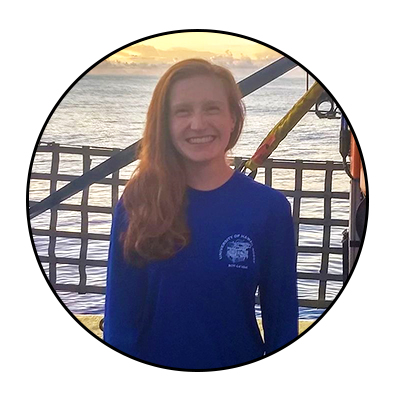
| Laura Anthony (she | her)NOAA Hollings Scholar Western Washington University During the summer of 2019, Laura Anthony interned with the Program as a Hollings Scholar while earning her bachelor’s degree at Western Washington University. Laura worked in Silver Spring, Maryland with her project mentors to examine anthropogenic impacts to deep-sea coral and sponge ecosystems. One of her biggest accomplishments was conducting an image and video analysis of human-made debris in the deep sea. Laura also worked with NOAA Legislative and Intergovernmental Affairs to study commercial species managed by NOAA Fisheries. She compiled images of debris to help inform ocean conservation policy and educate the public on the importance of designating protected areas for deep-sea coral habitats. Laura has always been passionate about deep-sea corals, and her internship experience helped her further define her interests and career goals. Following her internship, Laura decided to pursue a Ph.D. focused on deep-sea coral reproduction at Florida State University. She has regularly participated in research expeditions where she collects reef-forming corals to assess their reproductive success. |
|
Image
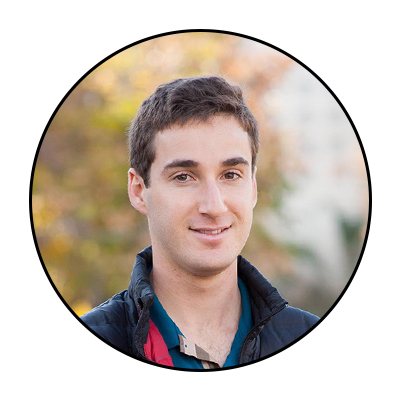
| Jason Greenstein (he | him)University of Redlands Master’s Student
|
|
Image

| Yanlin Li (he | him)University of Redlands Master’s Student University of Redlands master’s student Yanlin Li worked closely with the Program to create a GIS data viewer that merges observations from the Program’s national deep-sea coral and sponge database with several data products developed by the NOAA Ocean Exploration data management team at NOAA’s National Centers for Environmental Information. These products include 3D dive tracks and hillshade bathymetry, which uses patterns of light and shadow to create a 3D visualization of the seafloor or other terrain. Yanlin’s project is helping researchers to explore information on corals and sponges located along continental shelves, slopes, canyons, seamounts, and other underwater features. The viewer displays 3D imagery for several dives that were part of the 2015–2017 Pacific Islands Deep Sea Coral Initiative. Yanlin’s methods for creating these scenes are valuable because they can also be expanded to waters that have been explored in other regions of the nation. Because 3D visualization enhances researchers’ ability to recognize hotspots of coral and sponge life on the ocean floor, his approach is useful for identifying seafloor habitats that should be targeted for protections. Following his master’s program, Yanlin began working as a GIS analyst. |
|
Image
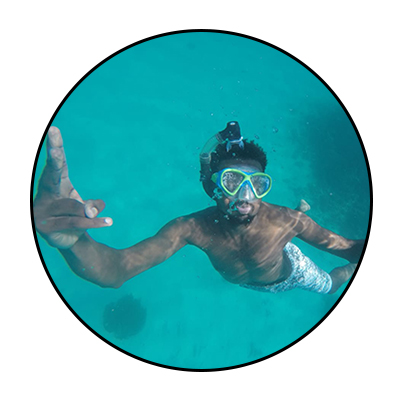
| Moses “Musa” Thiong’o (he | him)University of Redlands Master’s Student
|
2018
|
Image
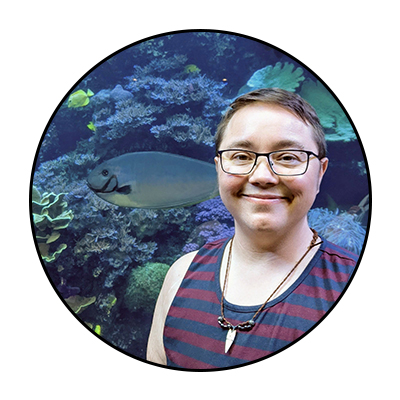
| Kai Sunstone (he | him)NOAA Hollings Scholar (co-mentored by Craig Wollcott, NOAA Legislative Affairs) Colorado State University
In 2018, Kai interned with the Program as a Hollings Scholar while studying human dimensions in natural resources at Colorado State University. He worked with his mentors to investigate how congressional policy informs regional fishery management council decisions on habitat protection. His project involved careful tracking of legislative policy, attending briefings to help political leaders stay informed of NOAA needs and policies, and learning how regional research teams develop and accomplish their objectives. Kai compiled his findings into a StoryMap that illustrates the intersection of legal affairs and deep-sea coral conservation on the West Coast. This was Kai’s first time working in the field of marine policy. He thoroughly enjoyed his experience at NOAA and stated that his time at the agency made lasting impacts on his career choices. Following his internship, Kai continued pursuing his passion for ocean policy at Lewis & Clark School of Law, with a speciality in ocean and coastal law. Kai also began working as a legal intern at the Environmental Defense Fund. |
2017
|
Image
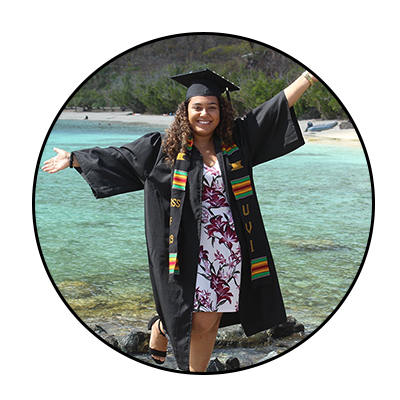
| Danielle Olive (she | her)NOAA Educational Program Partnership Scholarship Intern University of the Virgin Islands
Danielle Olive was a Program intern during the summer of 2017. The internship was her first experience with fisheries science and management. She completed a project to define and characterize seafloor protections along the East Coast—in the Gulf of Mexico and U.S. Caribbean waters. After gathering information from regional fishery management councils, non-governmental organizations, researchers, and both commercial and recreational anglers, Danielle compiled her findings into a StoryMap. Through this project, she improved her understanding and knowledge of current deep-sea coral protections while informing the evaluation of further protections. Following her internship, Danielle completed her bachelor’s degree in biology and began pursuing a master’s degree in marine and environmental sciences at the University of the Virgin Islands. Her graduate work has focused on the life history characteristics of mutton snapper. |